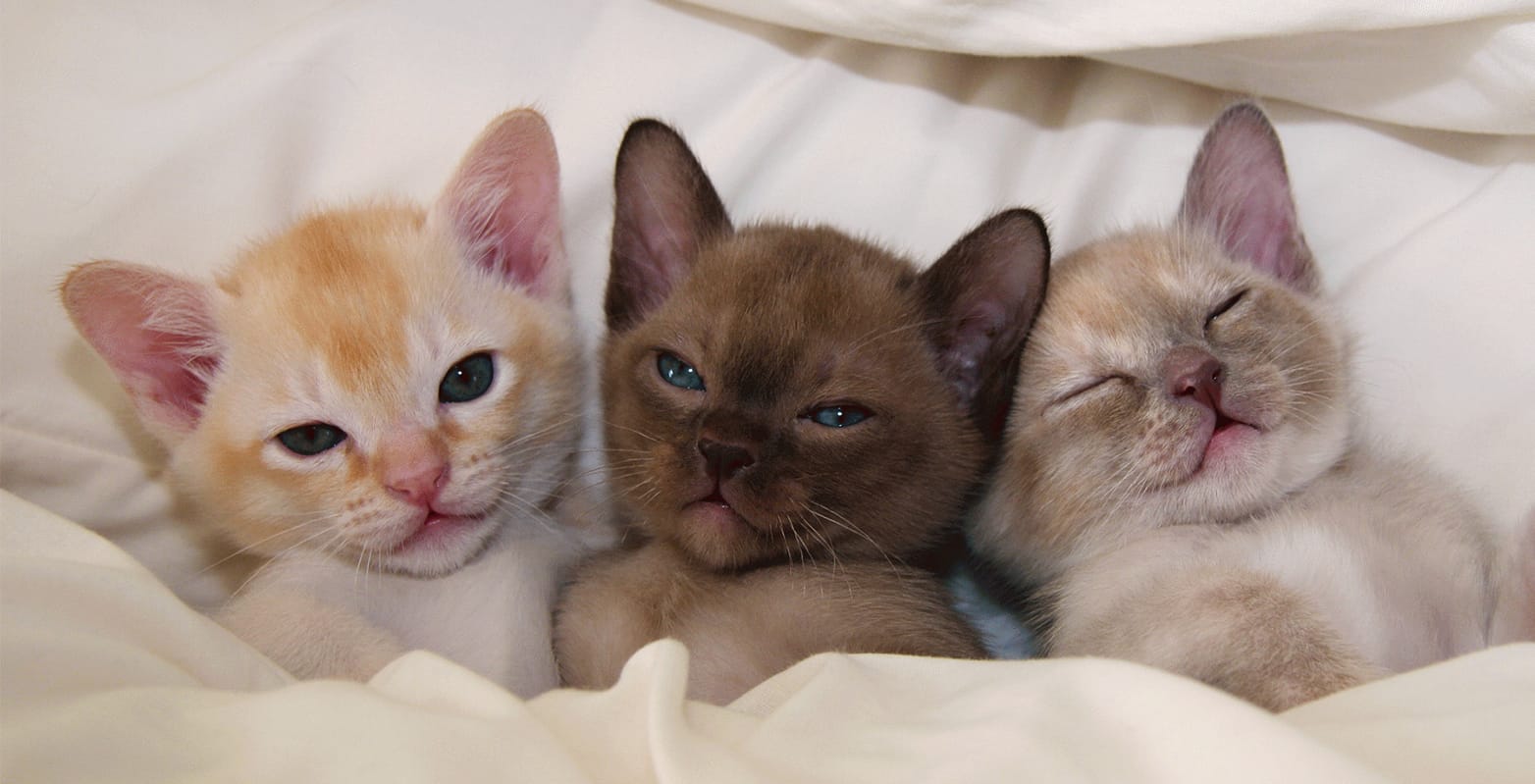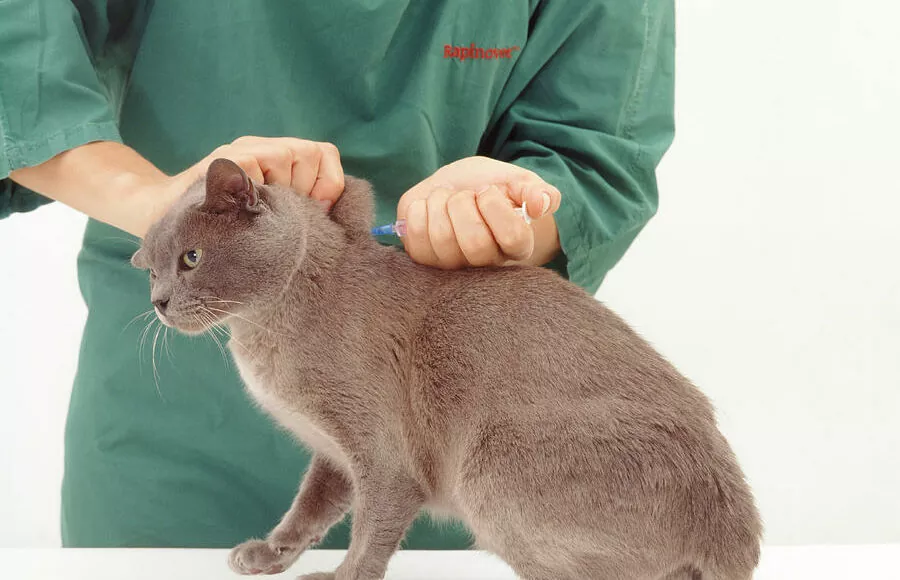Burmese cats originate from Burma, Thailand and Malaya where they are well documented. Although they have been imported into many countries, along with their close cousins the Siamese, as early as the mid 1800s, it was the striking appearance of the blue-eyed Siamese that was preferred, and the little brown cat with the yellow eyes gradually disappeared.
In 1930 Dr Joseph Thompson of San Francisco, California, imported a brown female, whom he called Wong Mau. Dr Thompson felt that Wong Mau was a distinct breed of cat and decided to embark on a breeding programme to prove this. Wong Mau was mated to the nearest suitable stud – an imported Siamese called Tai Mau. The kittens produced were either seal point Siamese, like their sire, or little brown cats like Wong Mau. But when Wong Mau was mated to her son, Yen Yen Mau, there was a third, much darker, type of kitten produced. Dr Thompson called this dark coated cat a Burmese.
.jpeg)
According to the breed standard, the Burmese cat is intelligent, gregarious, and has a pleasant expression. If properly nurtured and socialized, it will also have a similar character. Engaging and lively, the Burmese will enjoy playing with their family and learn how to fetch toys. Their insatiable curiosity may get them into danger since they will investigate every open doorway, whether it leads to a different room, a car, or a delivery van! Friendly and outgoing with family and guests, the Burmese will like attention and will complain if they don't receive enough of it! Overall, the Burmese cat is a loving and affectionate companion that thrives on human interaction. They are known for their vocal nature and will not hesitate to communicate their needs and desires to their owners.

Burmese Cat Fun Facts
Although they look pretty sleek and petite, the Burmese cat weight can reach 5.4 kg, making them heavier than the average cat. They are also commonly referred to as “bricks wrapped in silk” because of their heavy weight.
There are two versions of the Burmese cat, the British and the American with the difference being that British Burmese cats have a wedge-shaped head and slightly slanted eyes while the American version has a stockier build and a broader head, with rounded eyes.
Burmese cats are said to have been viewed as sacred in Myanmar and celebrated by Buddhist monks in monasteries and temples.
Outdoors or Indoors
Not really suited to a completely indoor life, yet sufficiently curious and inquisitive as to land themselves in serious trouble, the Burmese is in need of a large home with a secure outdoor space such as a covered run or cat-proofed fence. This is a serious consideration for this breed as they are very active, and will become stressed and potentially destructive without the necessary space to explore, jump, climb, play, and supervise.
Appearance
So this is going to differ slightly, depending on where you live. There are, in point of fact, two Burmese cats.1 Though they originated from the same stock and most cat registries don't consider them to be genetically different breeds, there are still distinct differences between the American Burmese and the European Burmese.The European (sometimes called "traditional") Burmese is the more slender of the two, with a wedge-shaped head, small, pointed ears, and almond-shaped eyes. Meanwhile, the American (or "contemporary") Burmese is notably stockier with a wider head, ears that are slightly wider at the base than the European, and eyes that are much rounder and more expressive.
Vaccination of Burmese cats is essential to prepare their bodies to face various bacteria, viruses, and fungi. The first vaccinations are typically given by breeders at the cattery, but then it becomes the owner’s responsibility. Proper preparation for the procedure is crucial.

Why Vaccinate a Burmese Cat?
Vaccination stimulates the production of antibodies that neutralize viruses entering the animal’s body. In other words, it helps the immune system fight diseases that could be fatal to the pet.Vaccinating a Burmese cat is also in the owner’s interest as it reduces the risk of the animal transmitting diseases to humans.Vaccines are recommended for all Burmese cats, even those that are not allowed outdoors. Pathogens can spread through water and food, and even the most attentive owner cannot fully protect their cat from all potential threats.
Vaccination Schedule:
Burmese kittens are vaccinated against:
Rabies: At 3 monthsPanleukopenia, Calicivirus, Herpesvirus infection, Chlamydia: At 2 months, with a booster after 14-28 days
Microsporia: At 2 months, with a booster after 14 days
Feline Infectious Peritonitis: At 4 months, with a booster after one monthSubsequently, adult cats receive annual revaccinations.
How to Prepare a Burmese Cat for Vaccination
To ensure a successful procedure and avoid complications:
Follow the vaccination schedule: Adhere to the dates indicated on the vaccine packaging.
Purchase quality vaccines: Use reputable and proven vaccines.
Ensure the cat is healthy: Have the Burmese cat examined by a veterinarian before vaccination.
Avoid planned surgeries: Do not perform surgeries (e.g., neutering) within 3 weeks after vaccination.
Minimize stress: Avoid stressful situations (e.g., moving, guests with animals, shows, travel) one week before and after vaccination.
Treat for parasites: 10 days before vaccination, treat the cat for ticks, fleas, and worms. This ensures the vaccine’s effectiveness. Provide a nutritious, balanced diet and prevent contact with other animals.
Do not vaccinate pregnant or nursing cats: Also avoid vaccinating cats that have recently undergone surgery or are on antibiotics.Vaccination records should be entered in the cat’s veterinary passport, indicating the date and type of vaccine. This document is necessary for participating in shows and traveling both domestically and internationally.Before buying a Burmese cat, make sure to find a good veterinarian who will look after the pet and keep track of its vaccination schedule.